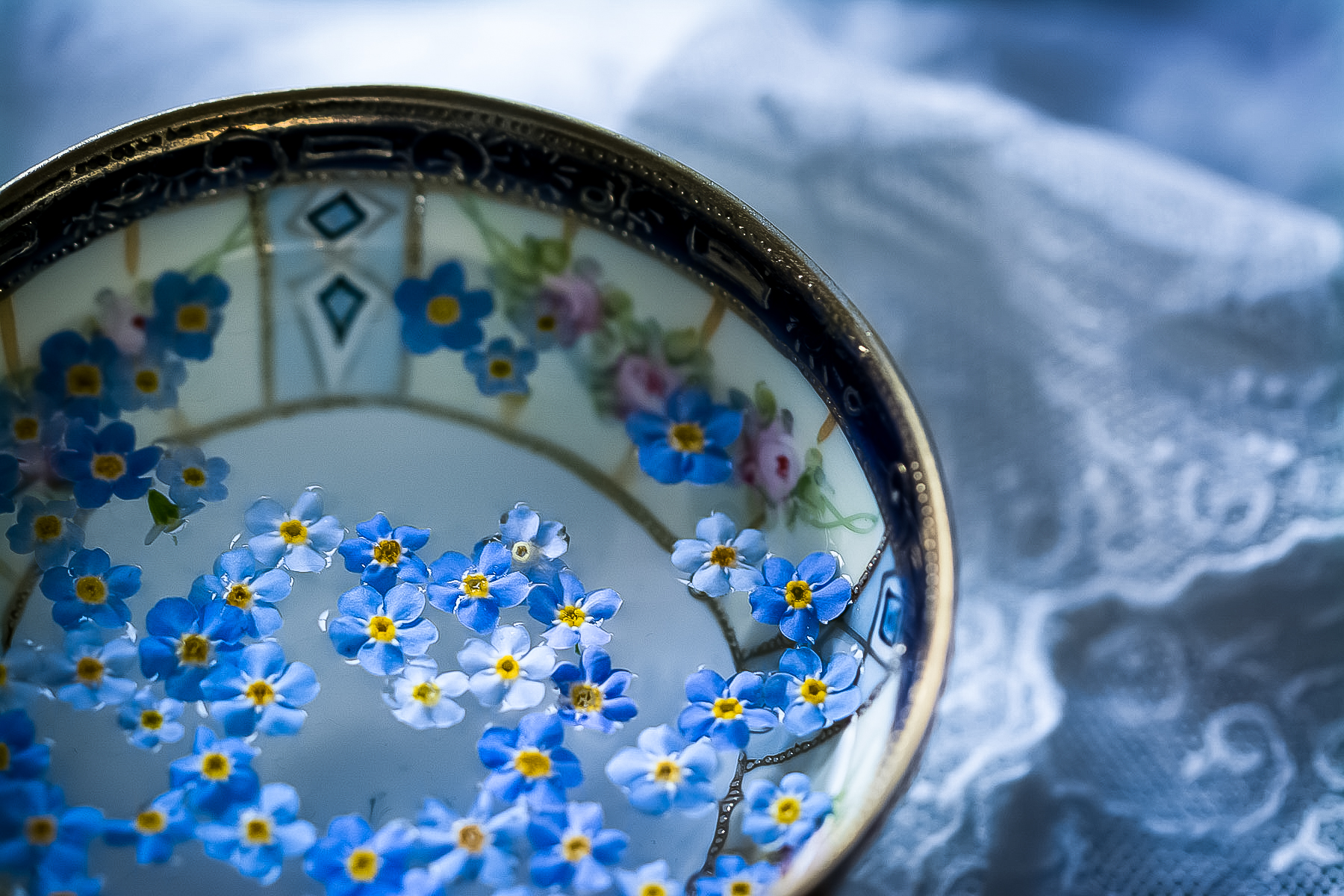I was eight and my sister Shannon was six when my mom announced we’d be in charge of the supper dishes now. Looking back on the situation as an adult, I realize she must have come behind us every night to touch up the areas we inevitably missed: puddles of grease on the stove, sticky cupboards, the abhorred baking trays we always “forgot” to finish. But for better or for worse, we took on the chore of kitchen clean-up at these tender ages, and our routines altered nary a bit over the next ten years: I washed, and Shannon rinsed. It was my job to empty the drain strainer in the sink, and hers to sweep the floor. I scrubbed the stove (not very well, as has already been established), while she wiped down the counters. I emptied the trash, and although I don’t remember what she was supposed to do to compensate me for that one, whatever it was, I always had a strong conviction that it was hardly sufficient. Also, we played Dishestown.
When I reflect on it now, Dishestown sounds like something out of an Edith Nesbit book, a game the Bastable children would have concocted if they’d been plucked out of Victorian England and planted in a 21st-century home with an alarmingly untidy kitchen and no maid in sight. It consisted of the imaginative personification of all the familiar kitchen objects, and elaborate spoken accounts of their conflicts, joys, and high jinks. For example, the silverware drawer was full of matronly spoon-women paired with spiky-headed fork-men, each set accompanied by a happy assortment of little spoon-girls and fork-boys. (There were also a few business-like butterknife-men in the mix, but these rarely made time for the joys of home and family.) Next to these pleasing rows of nuclear cutlery families, a curvaceous white garlic press always looked gentle and demure with a slightly-bowed head and a flapping steel apron, while a can-opener with a crooked mouth and uneven wide eyes tried to court her to no avail.
The commencement of a session of Dishestown had to be signaled by the joint recitation of a little chant we invented:
Dishestown was in a rush,
and everyone was saying hush
followed by a lot of clanging metal and enthusiastic shushing. This couplet, which seemed a piece of literary genius when we were six and eight years old, struck us as slightly foolish by the time we were ten and twelve. However, with the characteristic superstition of children, we felt wrong about playing the game without the proper intro. Thus, while we sang the commencement chant with gusto in the early days of Dishestown, we had taken to murmuring it somewhat sheepishly by the end, checking the hallway for any snooping adults who might be quietly laughing at our antics as inappropriately juvenile for two young ladies so advanced in age.
In the fridge, a tub of Sana margarine was an enchanting (if slightly selfish and unpredictable) maiden with dark hair and eyes, who enjoyed passing the time with Bizim, a foil-wrapped block of vegetable spread we envisioned as a cheerful, self-deprecating blonde. Sadly, Sana and Bizim’s camaraderie would be threatened by the appearance of a malicious newcomer. Rama was an embittered bucket of butter substitute with an annoyingly complicated three-tiered lid (instead of the two tiers we were used to), and she was determined to siphon off the mutual loyalties of the BFFs who were already there. Oh, the interpersonal messes margarine can get itself into!
Of course, there were dangers in Dishestown of more epic proportions than a little jealousy between items in cold storage. There were the four vicious gas burners that could erupt into flame at any time. They once melted a well-meaning young plastic spatula who had never done anyone harm. Also, in the far reaches that loomed over the stove, the terrible roaring of the mysterious Vent Monster could sometimes be heard, sending nightmares into the dreams of even the bravest silverware children.
Our favorite inhabitant of Dishestown was a small blue step stool that stood on four legs and sported a latticed top. He was somewhat timid, but could be brave in a pinch, and spent most of his time chatting with the huge, kind Katadyn water filter that lived on her own small table in the corner next to the kitchen balcony. When Mom decided to move the Little Blue Stool out of the kitchen and into the bathroom upstairs, we held a going-away party for him at which all the prominent members of Dishestown made speeches about how deeply he would be missed, and we brought ourselves almost to tears describing the anguish the water filter felt as she watched him depart.
The humor and pathos of this memory still gives me a fond, private laugh on occasion. There we were: two little girls in glasses with piles of unwashed dishes behind us, and our basin of what my mother liked to call “hot, sudsy water” rapidly growing cold as we stood misty-eyed on the white, tiled floor and listened to a moving tribute delivered by an influential pepper-grinder to a plastic stool with rubber caps on its ends. Why did we do this? Why did we willingly add hundreds of hours of time onto the most-dreaded part of the day for a space of years? Why did we expend daily creative energy expanding the scope of a chore we could have completed in 20 minutes with a little focus and elbow grease? Why? That’s my favorite part.
I think we played Dishestown the way we kept folders of poor but beloved pencil drawings to show off to visiting adults. I think we played it the way we carried tiny notebooks around with us to hold whatever fumbling nature poems we came up with on our outdoor excursions.
I think we played Dishestown because we had to because to be human is to hunger for meaning, to crave a narrative, to thrive on stories.
It is the stories that carry us through the tedious and the tiresome with our eyes still wide for wonder. It is the stories that pump wind into our sails. Here’s to always making room for the work of imagination, even if it means later nights and longer kitchen clean-up.
The featured image is courtesy of Julie Jablonski and used with her generous permission for Cultivating and The Cultivating Project.
Bryana Joy is a writer, poet, and full-time artist who spends most of her time making and mailing the Letters From The Sea Tower, a handmade monthly subscription letter full of watercolor sketches, paintings, and snippets of glory from the Great Books. Bryana has lived in Turkey, Texas, and England, and currently resides in Eastern Pennsylvania with her husband. She enjoys hosting online poetry workshops, and her poetry has appeared or is forthcoming in an assortment of literary magazines, including The Christian Century, Beloit Poetry Journal, and Chestnut Review. Bryana takes delight in thunderstorms, loose-leaf tea, green countrysides, and the music of Johann Sebastian Bach.
Leave a Reply
A Field Guide to Cultivating ~ Essentials to Cultivating a Whole Life, Rooted in Christ, and Flourishing in Fellowship
Enjoy our gift to you as our Welcome to Cultivating! Discover the purpose of The Cultivating Project, and how you might find a "What, you too?" experience here with this fellowship of makers!


This was delightful! It recalled to mind some of the things I did when I did dishes. I totally relate to the “rows of nuclear cutlery families”! Doing dishes usually involved most of the utensils going swimming a lot, and water dripping down my arms, and the whole process taking for eeeeevvvver!! Thanks for bringing back some fond, silly memories.
Thanks for sharing this, Emily! There’s real value in reflecting on some our childhood silliness, isn’t there?
Bryana, I love this story – for its charm and its deeper meaning. It reminds me of how, in her hilarious family memoirs, Shirley Jackson recounts doing a grownup version of this in her own kitchen. So you’re in good, quirky, creative company. 🙂
I’m not familiar with Shirley Jackson’s memoirs, Rebecca, but now I’m intrigued! Also, thanks for reading my little story and for your kind words about it. 🙂
This was such a delightful read!
Thank you, Bryanna